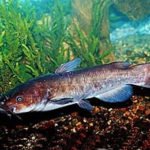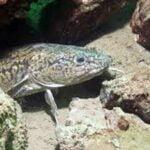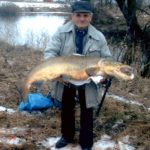Okoń – (Perca fluviatilis ) – Perch

Okoń – Drapieżna Ryba Słodkowodna
Okoń to rodzaj drapieżnych ryb słodkowodnych zaliczany do okoniokształtnych. Znanych jest trzy gatunki okonia, z których europejski Perca fluviatilis L., 1758, jest jednym z najbardziej rozpowszechnionych w Polsce. Oto bliższy wgląd w ten fascynujący gatunek ryby:
Znane Gatunki Okonia:
- Perca flavescens (Mitchill, 1814) – Północnoamerykański
- Perca schrenkii Kessler, 1874 – Azjatycki
- Perca fluviatilis L., 1758 – Europejski
Występowanie:
Okoń europejski spotykany jest w większości zbiorników słodkowodnych oraz w przybrzeżnych wodach Bałtyku.
Charakterystyka:
- Dorasta do około 50 cm długości, przy średnicy 25-30 cm i wadze do 3 kg, choć zazwyczaj nie przekracza 1 kg.
- Posiada duży pysk zdolny do dużego rozwarcia.
- Łuski srebrne, drobne i głęboko umiejscowione z charakterystycznymi ząbkowanymi krawędziami.
- Niedoświadczeni wędkarze mogą go pomylić z sandaczem, jednak sandacz wyróżnia się smuklejszą budową i większymi gabarytami.
Zachowanie:
Okoń jest rybą żarłoczną, co czyni go często uważanym za szkodnika ze względu na swoją dużą płodność.
Wymiar Ochronny:
Od 2006 roku w Polsce wprowadzono wymiar ochronny okonia, obejmujący również maksymalną długość, powyżej której ryba musi zostać wypuszczona z powrotem do wody.
Podsumowanie
Okoń europejski odgrywa istotną rolę w ekosystemach słodkowodnych. Jego wprowadzenie do Australii zyskało popularność wśród wędkarzy. Pomimo braku ochrony w przeszłości, obecnie wprowadzenie wymiaru ochronnego przyczynia się do zachowania populacji tego gatunku i równowagi ekologicznej w wodach słodkich.






